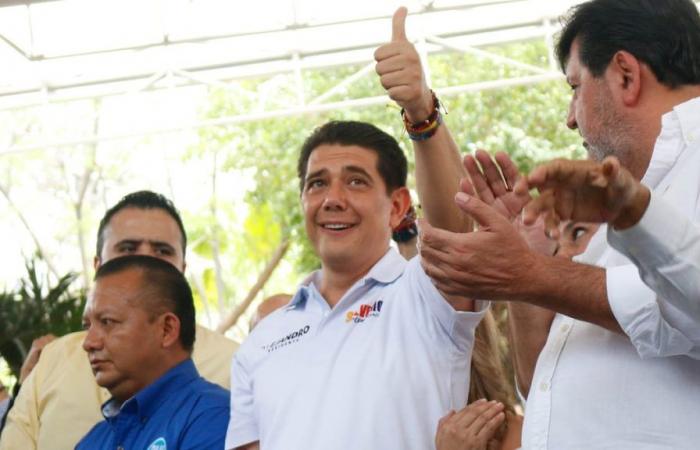The mayor of Chilpancingo, Alejandro Arcos, appeared this Thursday in the local media, showing his face after the murder of his general secretary in the city hall, Francisco Tapia, who had just been shot on a street in the center of the city: “It is very painful, very unfortunate. “We demand justice so that this crime does not go unpunished.” His right-hand man had only been in office for three days; both had taken office on Monday as part of the new PRI local government. Another three days later, it was Arcos himself who was murdered this Sunday. The capital of the State of Guerrero, one of the poorest and most forgotten in Mexico, deepens the spiral of violence and social decomposition that extends across large areas of the State, mired in a thousand battles between crime groups for control of the territory.
The murder of Arcos has been confirmed by Alejandro Moreno, the president of the PRI, and the State Prosecutor’s Office, without giving many more details. Local media suggest that the mayor was beheaded. According to the same sources, his head appeared in the middle of the afternoon on the roof of a white van, with the rest of his body in the driver’s seat. Arcos had spent the morning visiting the neighborhoods most affected by the rains and floods that are wreaking havoc in much of the State.
Guerrero, and in particular Chilpancingo, has been the center of a war between criminal groups in recent years. Specifically, Los Tlacos and Los Ardillos, part of a galaxy of local mafias that fight among themselves after the fall of large organizations. The objective is the dispute over the territory to control all types of businesses. Not only drug trafficking, which has a long tradition in Guerrero, a producer of opium and marijuana in the mountains, just over an hour by car from the capital. Kidnapping, extortion, human trafficking, transportation, food, any activity that makes money. The mafias are part of a tangle of economic and political interests that, added to institutional weakness, if not abandonment, causes an explosive cocktail that makes it difficult to identify its ingredients.
In the summer of last year, seven dismembered bodies appeared in a central square of the city and a message to the then municipal president, Norma Otilia Hernández, to whom they asked for a meeting, a “second breakfast,” in criminal words stamped on the walls. Days later, a video began to circulate showing the mayor shaking hands with the alleged leader of the Ardillos, Celso Ortega Jiménez.
The pressure increased in the following weeks, with scenes of chaos and terror in which a crowd took over the city center with fires and drug blockades that caused the closure of businesses and schools. The control of local transport, taxis and buses, was at the origin of the crisis. The battle left six drivers dead and several injured. Just a month later, in September of last year, a group of hitmen shot dead the head of the Attorney General’s Office in Guerrero, Fernando García, in the middle of the street south of the capital.
Guerrero also has a long history of political violence. From the silent repression of guerrilla groups in the 60s and 70s, the leaden years of the PRI government, to the traumatic disappearance of the 43 students from Ayotzinapa. The case is an archetype of all the ills of the State and by extension, of all of Mexico. This year marks a decade with hardly any progress in research. The main thesis continues to be that drug traffickers and local authorities acted together to attack the boys, of whom only a couple of bone remains have been identified. Already this year, another group of normalistas set fire to the state parliament in Chilpancingo in April for the murder at the hands of the police of another of their classmates.
Another actor in the midst of the hurricane has been the Church. The bishops of the local dioceses have intervened as mediators between criminal groups in search of a peace that the authorities cannot achieve. For now, the response of the Morenoist governor, Evelyn Salgado, to the murder this Sunday of the mayor of Chilpancingo has been to post a tweet condemning the attack.






